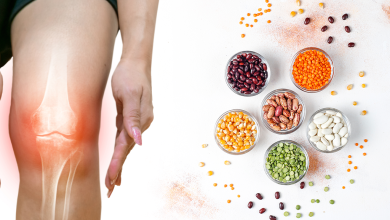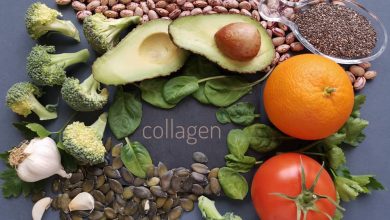The Miracle Food for Joint Pain Relief — Backed by Top Dietitians

Joint pain is one of the most common health issues worldwide, affecting millions of people regardless of age or lifestyle. Whether caused by arthritis, inflammation, ageing, or injury, chronic joint discomfort can seriously affect mobility and overall quality of life. But what if the secret to soothing your aching joints wasn’t hidden in a bottle of pills or a pricey supplement—but rather on your plate?
Top dietitians are now pointing to one miracle food for joint pain relief that’s gaining remarkable attention in the nutrition world. Backed by science and countless testimonials, this natural remedy is proving that sometimes, the best medicine really is food.
The miracle food for joint pain relief, the science behind its power, and how you can include it in your daily diet for long-lasting results.
Understanding Joint Pain: Why Food Matters
Before revealing the miracle food, it’s important to understand why diet plays a crucial role in joint health.
Joint pain often stems from inflammation. Conditions like osteoarthritis, rheumatoid arthritis, and gout are all associated with chronic inflammation that damages cartilage—the protective tissue cushioning your joints.
While painkillers and anti-inflammatory drugs can provide temporary relief, they don’t address the root cause. On the other hand, anti-inflammatory foods can help reduce the underlying inflammation naturally, promoting healing and long-term relief.
According to Dr. Amy Goodson, a registered dietitian and sports nutritionist, “The foods you eat can either trigger inflammation or calm it. A diet rich in anti-inflammatory nutrients supports joint lubrication, reduces stiffness, and improves overall mobility.”
So, What Is the Miracle Food for Joint Pain Relief?
After years of research and dietitian-approved studies, the miracle food for joint pain relief turns out to be — fatty fish, especially salmon.
Yes, you read that right. Salmon (along with mackerel, sardines, and trout) is packed with omega-3 fatty acids, nature’s most powerful anti-inflammatory compounds.
These essential fats—particularly EPA (eicosapentaenoic acid) and DHA (docosahexaenoic acid)—help reduce the production of inflammatory molecules in the body, easing pain, swelling, and stiffness in the joints.
Backed by Science
Several studies confirm the effectiveness of omega-3s in reducing joint discomfort:
- A study published in the Annals of the Rheumatic Diseases found that participants who consumed omega-3-rich fish regularly had significantly lower levels of inflammatory markers.
- The Arthritis Foundation highlights omega-3s as one of the most effective nutrients for people with arthritis, noting improvements in morning stiffness and overall mobility.
- According to dietitian Dr. Samantha Heller, “Omega-3 fatty acids from fatty fish can help block enzymes that erode cartilage, protecting the joints over time.”
Why Salmon Stands Out
While many foods offer joint benefits, salmon is considered the gold standard for several reasons:
- High Omega-3 Concentration
Wild-caught salmon is one of the richest natural sources of omega-3 fatty acids, with more than 2,000 mg per 100g serving. - Packed with Vitamin D
Vitamin D helps maintain bone strength and supports calcium absorption. A deficiency in vitamin D is often linked to joint pain and bone weakness. - Contains Astaxanthin — a Potent Antioxidant
This pink pigment found in salmon has been shown to reduce oxidative stress, a key factor in inflammation and ageing-related joint damage. - Supports Muscle Strength Around the Joints
Strong muscles protect and stabilise joints. The protein in salmon helps maintain lean muscle mass, especially important for older adults.
How Omega-3 Fatty Acids Fight Inflammation
To understand how salmon works its “miracle,” it’s worth taking a closer look at how omega-3s combat inflammation at the cellular level.
When your body experiences inflammation, it releases molecules called cytokines and prostaglandins that trigger pain and swelling. Omega-3s work by blocking the enzymes that produce these inflammatory compounds.
In simple terms, omega-3s “turn down” your body’s inflammatory response—naturally reducing pain, redness, and stiffness.
Additionally, omega-3s help increase the production of joint-lubricating synovial fluid, which keeps your movements smooth and pain-free.
Other Joint-Friendly Nutrients Found in Salmon
Beyond omega-3s, salmon contains an impressive lineup of nutrients that work together to support joint health:
- Vitamin B12: Promotes nerve health and reduces fatigue, which can worsen pain perception.
- Selenium: Helps combat oxidative stress and supports cartilage repair.
- Calcium & Phosphorus: Strengthen bones and prevent deterioration of the skeletal system.
- Collagen precursors: Amino acids like glycine and proline found in salmon assist in natural collagen production.
Together, these nutrients make salmon a complete, joint-healing superfood.
How to Include Salmon in Your Diet
Dietitians recommend eating at least two servings of fatty fish per week for optimal joint and heart health.
Here are some simple and delicious ways to add salmon to your weekly meals:
1. Grilled or Baked Salmon Fillets
Season with olive oil, turmeric, and garlic for an extra anti-inflammatory boost.
2. Salmon Salad
Mix cooked salmon with leafy greens, avocado, and a drizzle of lemon vinaigrette.
3. Salmon Soup or Broth
A soothing, nutrient-rich option for cold days or when joint pain flares up.
4. Smoked Salmon on Whole Grain Toast
A quick, protein-packed breakfast rich in healthy fats.
5. Salmon Patties
Mix with oats, eggs, and herbs for a joint-friendly, easy-to-make dish.
What If You Don’t Eat Fish?
For those who are vegetarian, vegan, or simply don’t enjoy fish, don’t worry—there are plant-based alternatives that offer similar benefits.
Omega-3-Rich Plant Foods:
- Chia seeds
- Flaxseeds
- Walnuts
- Hemp seeds
- Algal oil supplements (derived from marine algae, a direct plant-based source of DHA and EPA)
While plant sources mainly contain ALA (alpha-linolenic acid), your body can convert some of it into EPA and DHA, albeit in smaller amounts.
Dietitian Tip: To maximise conversion, reduce intake of omega-6-rich oils (like sunflower and corn oil) that can interfere with omega-3 absorption.
Complementary Foods That Boost Joint Health
While salmon steals the spotlight, dietitians recommend pairing it with other anti-inflammatory and antioxidant-rich foods for maximum joint protection.
1. Turmeric
Contains curcumin, a natural compound known to relieve arthritis pain. Combine it with black pepper for better absorption.
2. Ginger
Acts as a natural pain reliever and reduces stiffness. Perfect in teas, soups, or stir-fries.
3. Berries
Rich in anthocyanins, which combat free radicals that damage joint tissue.
4. Leafy Greens
Kale, spinach, and collard greens are high in calcium and vitamin K—both essential for bone strength.
5. Olive Oil
A heart-healthy fat that mimics the anti-inflammatory effects of NSAID medications.
What the Experts Say
Top dietitians and nutrition researchers strongly back the role of omega-3-rich foods in managing joint pain naturally.
Dr. Kristin Kirkpatrick, RD, notes:
“People often underestimate how powerful diet changes can be for joint pain. Salmon is one of the best foods you can eat—not just for your joints, but for your overall wellbeing.”
Dr. Robert Rountree, a functional medicine expert, adds:
“Inflammation drives most chronic diseases, including arthritis. Omega-3s help put out that internal fire.”
Even the Harvard School of Public Health recognises fatty fish as a cornerstone of anti-inflammatory diets, like the Mediterranean diet—famed for its joint and heart-protective benefits.
Real-Life Success Stories
Countless people have reported noticeable improvements in their joint health after adding salmon or other omega-3-rich foods to their diet.
Take Maria, 58, who struggled with osteoarthritis in her knees:
“After including salmon in my meals twice a week for just a month, I noticed less morning stiffness and more flexibility. I didn’t think food could make such a difference!”
Or Daniel, 47, an office worker battling chronic back pain:
“I switched from red meat to salmon and nuts, and the difference was unbelievable. My pain has reduced, and I feel more energetic.”
These real-world examples highlight what studies have already proven—the right foods can heal from within.
Tips for Buying and Preparing Salmon
To reap the full joint-healing benefits, choose high-quality salmon and prepare it in ways that preserve its nutrients.
Buying Tips:
- Opt for wild-caught salmon over farmed varieties for higher omega-3 levels and fewer contaminants.
- Look for vibrant, firm flesh with no off smell.
- Choose fresh or frozen over heavily processed forms (like breaded or canned with additives).
Cooking Tips:
- Avoid deep frying, which can destroy healthy fats.
- Bake, grill, steam, or poach for maximum nutrient retention.
- Pair with herbs like turmeric, rosemary, or garlic for added anti-inflammatory benefits.
Lifestyle Changes to Support Joint Health
Eating salmon regularly is powerful, but it’s most effective when combined with a joint-supportive lifestyle.
Here’s what dietitians recommend:
- Stay Active: Gentle exercises like swimming, walking, and yoga keep joints flexible.
- Maintain a Healthy Weight: Reducing pressure on joints lowers inflammation.
- Stay Hydrated: Synovial fluid, which lubricates joints, relies on proper hydration.
- Avoid Processed Foods: Refined sugars, fried foods, and red meat can trigger inflammation.
- Get Enough Sleep: Poor sleep increases pain sensitivity and inflammation.
The Bottom Line: Food Truly Is Medicine
The growing consensus among dietitians and researchers is clear—salmon is truly a miracle food for joint pain relief. Its rich omega-3 content, antioxidants, and essential nutrients help ease inflammation, protect cartilage, and improve mobility naturally.
Unlike quick fixes or synthetic painkillers, incorporating salmon into your weekly diet offers long-term results without side effects.
Whether you’re dealing with arthritis, recovering from an injury, or simply aiming to keep your joints youthful and pain-free, adding salmon (or other fatty fish) to your plate might be one of the simplest, most effective steps you can take.
Quick Summary: Why Salmon Is the Miracle Food for Joint Pain Relief
| Benefit | Nutrient Responsible | Result |
| Reduces inflammation | Omega-3 fatty acids | Less pain and stiffness |
| Strengthens bones | Vitamin D, calcium | Improved joint support |
| Boosts joint lubrication | EPA & DHA | Smoother movement |
| Repairs cartilage | Selenium & protein | Healthier joints |
| Fights oxidative stress | Astaxanthin | Slows ageing and tissue damage |
Final Thought
In a world where people often turn to pills before their plates, the discovery of salmon as a miracle food for joint pain serves as a refreshing reminder: nature already provides the healing tools we need.
As dietitians continue to uncover the connections between food and pain relief, one message stands out loud and clear—when it comes to joint health, what you eat matters just as much as what you treat.
So next time you’re planning dinner, skip the takeout and go for that perfectly grilled salmon fillet.
Your joints will thank you.




